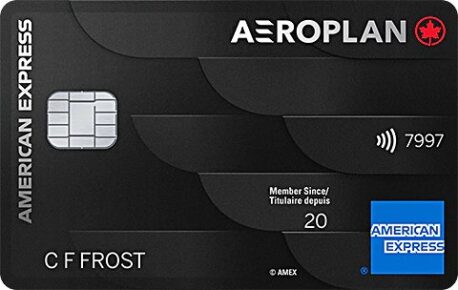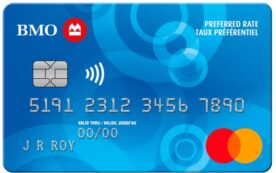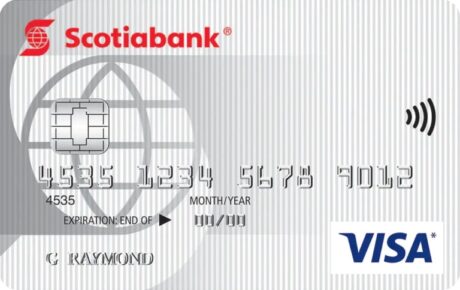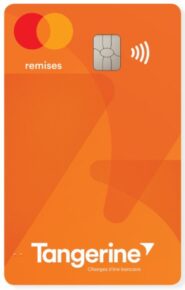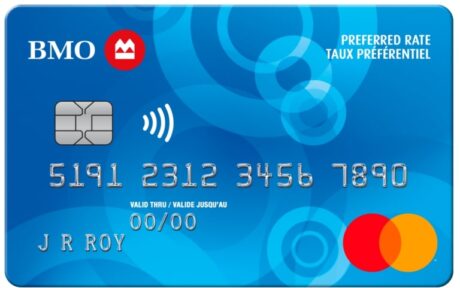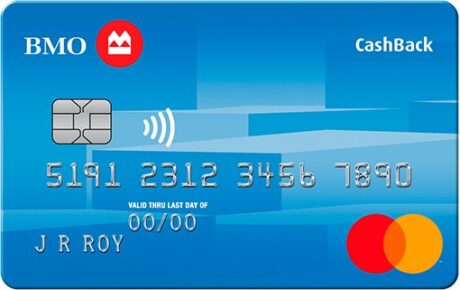Many or all of the products featured here are from our partners who compensate us. This may influence which products we write about and where and how the product appears on a page. However, this does not influence our evaluations. Our opinions are our own.
Balance transfer credit cards offer low interest rates on debt moved over from another card. Some cards offer very low promotional rates for a set period of time, such as 0% for six months, while others offer consistently low rates but have minimal perks.
NerdWallet has compiled a list of the best balance transfer credit cards so you can choose the one that fits your needs.
MBNA True Line® Mastercard®
Transfer high interest debt to the MBNA balance transfer credit card!
Welcome offer: You could get a 0% promotional annual interest rate (“AIR”)† for 12 months on balance transfers with a 3% transfer fee! No annual fee. Standard interest rate is 12.99%. Terms and Conditions Apply.
Best Balance Transfer Cards in Canada from our Partners
Credit Card |
Intro APR |
Balance Transfer Fee |
Annual Fee |
|
|---|---|---|---|---|
Best No-Fee card with Balance Transfer OfferMBNA True Line® Mastercard® credit card |
0% intro for 12 months on balance transfers
|
3%
|
$0
|
|
Scotia Momentum® No-Fee Visa* Card (for students) |
0.99% intro for 6 months on balance transfers
|
2%
|
$0
|
|
BMO Preferred Rate Mastercard®* |
0.99% interest rate on balance transfers for 9 months
|
2%
|
$29
Waived first year
|
Best balance transfer credit cards
Best overall balance transfer credit card
Scotiabank Value® Visa* Card
A rare 0% intro period on balance transfers and low interest rates year-round, the Scotiabank Value Visa can help you quickly pay down balances transferred from higher-rate credit cards.
Pros
- Cardholders who carry a balance will save money every month with this card’s low 12.99% interest rate on purchases, cash advances and balance transfers.
- A stellar 0% introductory interest rate on balance transfers for the first six months.
Cons
- No rewards.
- No insurance coverage.
- 0% introductory interest rate on Balance Transfers for the first 10 months (12.99% after that; annual fee $29).¹ Plus no annual fee in the first year.¹ Offer ends 31 Oct 2024.
- Save up to hundreds of dollars a year on interest.
- Low interest rate of 12.99%.
- Pay down higher interest rate balances faster.
- Transfer higher rate balances and save even more.
- To be eligible, $12,000 (individual) annual income is required. Also, you must have a Canadian credit file and be a Canadian resident that is the age of majority in the province or territory where you live.
- Terms and Conditions Apply. Click ‘Apply Now’ for complete details.
Best no-fee balance transfer credit card
MBNA True Line® Mastercard® credit card
With a strong intro offer, no annual fee and a low interest rate of 12.99%, the MBNA True Line Mastercard is an affordable, no-frills way to transfer balances, pay for purchases and build credit.
Pros
- Interest-free balance transfers for a full year.
- Save money while building credit with the no-fee credit card.
Cons
- Higher interest rate compared to the 8.99% offered on the MBNA True Line® Gold Mastercard®, which charges an annual fee.
- Few extra benefits and no rewards program.
- No annual fee.
- Standard Annual Interest Rates of 12.99% on eligible purchases, 12.99% on balance transfers✪, and 24.99% on cash advances.
- You could get a 0% promotional annual interest rate (“AIR”)† for 12 months on balance transfers✪ completed within 90 days of account opening, with a 3% transfer fee.
- Around-the-clock fraud protection.
- Use available credit on your credit card to transfer funds right to your chequing account.
- †, ✪, Terms and Conditions apply.
- This offer is not available for residents of Quebec.
- Sponsored advertising. MBNA is a division of The Toronto-Dominion Bank (TD) and TD is not responsible for the contents of this site including any editorials or reviews that may appear on this site. For complete information on this MBNA credit card, please click on the “Apply Now” button.
Best low balance transfer fee credit card
Tangerine Money-Back Credit Card
You can earn unlimited cash back at a 2% rate in up to three categories of your choice — all while earning 0.50% back on everything else.
Pros
- You can tailor the 2% rewards to your spending by choosing up to three categories from Tangerine’s list of 10, which includes basics like gas and groceries as well as unusual picks like furniture and home improvement.
- Transfer balances within your first 30 days and pay only 1.95% interest on the transferred balance for the first six months (19.95% after that).
Cons
- 2% cash back is a competitive rate, but many cards offer double the rewards on specific categories.
- Tangerine is a virtual bank with no physical bank branches.
- 2% on two categories of your choice: grocery, furniture, restaurants, hotel-motel, gas, recurring bill payments, drug store, home improvement, entertainment, or public transportation and parking.
- Get a third cash-back category by choosing to have your rewards deposited into a Tangerine Savings Account.
- 0.50% on everything else.
- Redeem cash back monthly as a statement credit or deposited into a Tangerine Savings Account.
- No annual fee.
- Transfer balances within your first 30 days and pay only 1.95% interest on the transferred balance for the first six months (19.95% after that). 1% balance transfer fee applies to the amount transferred.
- Get free cards for any authorized users on your account.
- It only includes purchase assurance and extended protection insurance. For more insurance, consider the Tangerine World Mastercard which requires a minimum personal income of $60,000. If you meet this requirement, you will automatically be considered for the World card if you apply for the Money-Back card.
- Preferred rates: 19.95% for purchases and cash advances.
- To be eligible, a $12,000 (individual) annual income is required. Also, you must have a Canadian credit file and be a Canadian resident of the age of majority in the province or territory where you live.
Best for: Students and newcomers
Scotia Momentum® No-Fee Visa* card
The Scotia Momentum No-Fee Visa Card doesn’t provide any bells or whistles, but it also doesn’t charge an annual fee, making it an option for people looking to build credit while earning cash back on everyday purchases.
Pros
- No annual fee.
- Benefit from a 0.99% introductory interest rate on balance transfers for the first 6 months (22.99% after that).
- Earn up to 1% cash back on eligible purchases and recurring bill payments.
- Opportunity to earn 5% cash back for a limited time with new cards opened by October 31, 2024.
Cons
- No premium perks or benefits.
- The balance transfer promotional period cannot be used to transfer a balance from another Scotiabank Account.
- Special Offer: Earn 5% cash back on all purchases for the first 3 months (up to $2,000 in total purchases). Plus, get 0.99% introductory interest rate on balance transfers for the first 6 months (22.99% after that; annual fee $0). Offer expires Oct. 31, 2024.
- No annual fee.
- Earn 1% cash back on all eligible gas stations, grocery stores, drug stores purchases and recurring payments.
- Earn 0.5% cash back on all other eligible purchases.
- Save up to 25% off base rates at participating AVIS locations and at participating Budget locations in Canada and the U.S.
- Preferred rates: 19.99% on purchases, 22.99% on cash advances.
- To be eligible, $12,000 (individual) annual income is required. Also, you must have a Canadian credit file and be a Canadian resident that is the age of majority in the province or territory where you live.
- Terms and Conditions Apply. Click ‘Apply Now’ for complete details.
Best low-rate card for purchases and balance transfers
MBNA True Line® Gold Mastercard®
MBNA True Line® Gold Mastercard offers one of the lowest rates for purchases and balance transfers, plus extended warranty benefits on most new items and savings on car rentals at a modest fee.
Pros
- One of the lowest regular purchases and balance transfer interest rates of 8.99%.
- Benefit from additional purchase warranty, purchase assurance and trip assistance.
Cons
- Unlike the no-fee MBNA True Line® Mastercard®, which charges 12.99% on purchases and balance transfers, this Gold card has a $39 annual fee.
- No promotional offer or rewards program.
- Balance transfers are subject to a steep minimum fee of $7.50 per transaction.
- $39 annual fee.
- Standard Annual Interest Rates of 8.99% on purchases, 8.99% on balance transfers✪ and access cheques, and 24.99% on cash advances.
- Around-the-clock-fraud protection.
- Access to 24/7 customer service.
- ✪, Terms and Conditions apply.
- This offer is not available for residents of Quebec.
- Sponsored advertising. MBNA is a division of The Toronto-Dominion Bank (TD) and TD is not responsible for the contents of this site including any editorials or reviews that may appear on this site. For complete information on this MBNA credit card, please click on the “Apply Now” button.
Best low annual fee balance transfer credit card
BMO Preferred Rate Mastercard®*
You can tap into competitive interest rates alongside free additional cardholders, extended warranty, purchase protection and access to BMO purchase installment plans with the BMO Preferred Rate Mastercard®*.
Pros
- Competitive interest rates with no annual fee for the first year.
- An attractive introductory balance transfer rate offer.
Cons
- The balance transfer rate goes back to 15.99% once the promotional period ends.
- No rewards program.
- Welcome Offer: Get a 0.99% introductory interest rate on Balance Transfers for 9 months with a 2% transfer fee and we’ll waive the $29 annual fee for the first year.*
- Enjoy our lowest interest rate of 13.99% on purchases.*
- Free extended warranty and purchase protection.*
- Zero Dollar Liability: protects you from unauthorized use of your credit card.*
- Worldwide acceptance at over 30 million locations.*
- *Terms and conditions apply.
- BMO is not responsible for maintaining the content on this site. Please click on the Apply now link for the most up to date information.

Best for: Travellers
CIBC Select Visa* Card
The CIBC Select Visa doesn’t earn rewards but offers low interest rates, discounts at the pumps, fee-free global money transfers and the option to add on insurance coverage.
Pros
- Ability to transfer up to 50% of your credit limit with 0% interest for 10 months.
- Competitive regular interest rates for purchases and cash advances.
Cons
- No ability to earn rewards.
- You’ll find lower regular interest rates on other cards.
- Intro offer: Get 0% interest for up to 10 months on balance transfers with a 1% transfer fee and a first year annual fee rebate. Transfer up to 50% of your assigned credit limit. Conditions apply.
- $29 annual fee. First year rebated. $0 for up to 3 additional cards.
- 13.99% for purchases and cash advances.
- The CIBC Select Visa Card comes with valuable insurance, including up to $100,000 of Common Carrier Accident Insurance.
- Link and use a Journie Rewards card to save on every fill-up at participating Pioneer, Fas Gas, Ultramar and Chevron gas stations.
- There are no transaction fees when sending a CIBC Global Money Transfer.
- Visa’s Zero Liability Policy offers protection from unauthorized purchases and fraudulent activity.
- Optional travel medical insurance and payment protection insurance available.
- To be eligible, you must have a Canadian credit file and be a Canadian resident of the age of majority in the province or territory where you live. You must also have a $15,000 minimum annual income.
Best for: Cash-back rewards
BMO CashBack® Mastercard®*
The BMO CashBack® Mastercard®* offers attractive earn rates on everyday purchases like groceries and utility bills, making it easy to quickly rack up rewards that you can turn into cold hard cash.
Pros
- Attractive introductory offer, especially if you’re interested in a balance transfer.
- No minimum threshold for redeeming your cash-back rewards. Redeem as little as $1 if you want.
Cons
- Accelerated earn rates for groceries and recurring bills are capped at $500 per billing cycle, a ceiling that might be easy to hit if you have a family or higher monthly balances.
- Offers fewer travel perks and types of insurance than some other cards.
- Welcome offer: Get 5% cash back in your first 3 months.*
- Then get 3% cash back on grocery purchases, 1% cash back on recurring bill payments and 0.5% unlimited cash back on all other purchases!*
- Now earn the highest cash back on groceries in Canada without paying an annual fee!†
- Get a 0.99% introductory interest rate on Balance Transfers for 9 months, 2% fee applies to balance amounts transferred.*
- No Annual fee.*
- Want to get your cash back ASAP? Now you can redeem your cash back anytime through direct deposit, as a credit on your statement or into your BMO InvestorLine account.*
- Extended Warranty.*
- Purchase Protection.*
- Receive a discount on car rentals.*
- *Terms and conditions apply.
- †Statement based on a comparison of the non-promotional grocery rewards earn rate on Canadian cash back credit cards as of January 4, 2023.
- BMO is not responsible for maintaining the content on this site. Please click on the Apply now link for the most up to date information.

Best for: Businesses
Scotia Momentum® for Business Visa* Card
Growing companies should look at the Scotia Momentum for Business Visa card for its low annual fee, impressive introductory rate for balance transfers, and strong cash back earn rate on common business purchases.
Pros
- A low introductory interest rate on balance transfers, plus 25-day interest-free grace periods on new purchases.
- Plenty of opportunities to earn cash back.
- Potential credit limits range from $500 to $100,000.
Cons
- No reward bonuses upon card approval.
- Few perks beyond relatively limited insurance options.
- The 3% cash back only applies to the first $50,000 in eligible purchases.
- Intro offer: 2.99% interest rate on balance transfers, Scotia® Credit Card Cheques and cash-like transactions for the first six months (22.99% after that). This rate cannot be used to transfer a balance from another Scotiabank Account, or to make a payment or deposit to another Scotiabank Account. Offer ends October 31, 2024.
- Earn 3% cash back on recurring bill payments and eligible gas station, restaurant and office supply store purchases — up to a maximum spend of $50,000. 1% cash back after that.
- 1% cash back on all other eligible purchases.
- Cash back rewards can be redeemed as deposits into eligible Scotiabank Canadian Dollar bank accounts or as credits against credit card balances.
- Annual fee: $79 for the primary card and $29 for each supplementary card.
- Credit limit of up to $100,000.
- Insurance offered: out-of province/territory travel emergency medical insurance (up to $1 million each for cardmembers, spouses and dependent children), rental car collision loss/damage insurance (eligible only for rental vehicles valued at less than $65,000), purchase security and extended warranty protection.
- Optional Scotia Business Loan Protection coverage up to $2,000,000.
- Save up to 25% off base rates on car rentals at participating Avis and Budget locations in Canada or the U.S.
- Visa SavingsEdge: receive discounts on business purchases at participating stores.
- Preferred rates: 19.99% on purchases, 22.99% on cash advances, including balance transfers and Scotia Credit Card Cheques.
Methodology: How we evaluate cards
NerdWallet Canada selects the best balance transfer credit cards based on their overall consumer value. Our evaluation is weighted by factors: 20% average earn value, 50% intro offer, and 30% fees and interest.
* Average earn value considers earning rates, rewards structure and spending categories.
* The intro offer considers the welcome bonus value, promotional interest rates, and any waived fees.
* Fees and interest consider interest rates for purchases, balance transfers and cash advances, and additional costs such as foreign transaction fees.
Other noteworthy features, such as insurance, special perks and extra benefits, earn unofficial bonus points. Only cards without a standard or promo low-interest balance transfer rates were considered.
Summary of the best balance transfer credit cards
| Card name | Why we like it | Annual fee |
|---|---|---|
| Scotiabank Value® Visa* Card | Best overall balance transfer credit card. | $29. |
| BMO Preferred Rate Mastercard®* | Best low annual fee balance transfer credit card. | $29. |
| CIBC Select Visa* Card | Best for: Travellers. | $29. |
| MBNA True Line® Gold Mastercard® | Best low-rate card for purchases and balance transfers. | $39. |
| Tangerine Money-Back Credit Card | Best low balance transfer fee credit card. | $0. |
| Scotia Momentum® No-Fee Visa* card | Best for: Students and newcomers. | $0. |
| MBNA True Line® Mastercard® credit card | Best no-fee balance transfer credit card. | $0. |
| BMO CashBack® Mastercard®* | Best for: Cash-back rewards. | $0. |
| Scotia Momentum® for Business Visa* Card | Best for: Businesses. | $79. |
How balance transfer credit cards work in Canada
What is a balance transfer credit card?
Balance transfer credit cards offer new cardholders an introductory low-interest rate on debt they transfer from another credit card. The rate may be as low as 0%, and promotional periods typically last six to 12 months.
Transferring your balance from one card to another allows you to take advantage of a lower rate for a set period of time. Lower rates keep your balance from growing as quickly.
If you can pay off your balance before the balance transfer card’s introductory rate ends, you may be able to save a substantial amount of interest. Because of this, balance transfer cards can actually be a tool for debt reduction.
Balance transfer credit cards often charge a fee to move your balance, however, so it’s important to crunch the numbers to make sure you’ll actually come out ahead.
What is a 0% balance transfer credit card?
Some balance transfer credit cards offer an interest rate of 0% during the promotional period. That means a balance transferred to that card won’t accrue any interest during the intro period, making it easier to pay off.
How do balance transfers work?
To transfer your balance from one credit card (usually with a higher interest rate) to a card offering a more attractive introductory rate, you’ll first need to apply for the new card.
Once approved, you will then request a balance transfer, listing the amount of the balance you’d like to move, along with other personal and account information.
When the transfer is approved, you will see the balance removed from the original card and added to the new card.
Keep in mind that any balance left after the promotional period ends will be subject to the regular interest rate — which is often much higher than the promotional rate.
How much can I save with a balance transfer?
If you carry a large balance on your credit card from month to month, transferring it to a credit card with a lower rate can result in significant savings, especially if you resist the urge to add new purchases, and instead focus on paying off the balance during the promotional period.
For example, let’s say you have a balance of $5,000 on a credit card with a 20% APR and you’re approved for a balance transfer card that will charge 0% interest on that balance for the first 12 months, plus a transfer fee of 3%.
If you move your balance to the new card and pay it off during the promotional period, your only cost will be the transfer fee of $150, whereas paying it off your old card over those same 12 months would have cost you $550, for overall savings of $400.
Actual savings will depend on many factors, including your current monthly payment amounts, your planned payment amounts on the new card, timing and card terms.
How to compare balance transfer credit cards
Not all balance transfer cards are created equal. To compare cards and find a balance transfer offer that works best for your situation, consider:
- The length of the introductory or promotional period (typically six to 12 months).
- The regular interest rate (after the promotional period ends).
- Any minimum or maximum transfer amounts.
- Any balance transfer fee.
- Any annual fee.
- Other benefits or perks of the card.
- Other qualification criteria.
Let’s take a closer look at these factors to help you consider which balance transfer card is best for you.
Compare credit card balance transfer promotional periods
Balance transfer credit cards offer their promotional interest rates for a set period of time, which vary in length from card to card. For example, BMO AIR MILES®† Mastercard®* offers an introductory interest rate of 0.99% on balance transfers for nine months, while the Tangerine World Mastercard® offers a 1.95% promotional balance transfer interest rate for the first six months.
Before applying for a balance transfer credit card, it’s important to be aware of the promotional period so you can choose one that matches well with your plans to repay the balance. It’s a good idea to review your budget to make sure it can accommodate the monthly payments required to pay off your debt by the end of the promotional period. That’s because any balance left at the end of the period will be subject to the card’s regular interest rate, which might be no better than that of your current card.
How does the 0% interest period work?
Some credit cards advertise interest-free balance transfers. These 0% interest offers sound attractive, and they can help you save money, as long as you understand how they work. During the interest-free period, you won’t be charged any interest on the balance you transfer (though you’ll still likely pay a transfer fee). After the 0% promotional period, any remaining balance will be subject to the card’s regular interest rate — which may be much higher.
Know the issuer’s balance transfer rules
When considering a balance transfer credit card, be aware of the terms and conditions associated with the transfer, including any limits on eligibility and how much you can transfer. For example, the CIBC Select Visa* Card will allow you to transfer up to 50% of your assigned credit limit.
In addition, issuers don’t usually allow balance transfers between their own cards.
Finally, unlike purchases, balance transfers aren’t eligible for an interest-free grace period. That means your transferred balance will be subject to interest right away — unless you have a 0% promotional rate.
Consider the impact of annual fees
Like many credit cards, some balance transfer credit cards come with annual fees, which will affect the overall cost of the balance transfer. However, it’s one more important point of comparison, and depending on the amount you’re transferring, paying an annual fee may be worthwhile to get a lower interest rate or transfer fee. In addition, some cards may waive the annual fee during the promotional period.
Compare balance transfer fees
Card issuers may charge fees for balance transfers, usually in the range of 2% to 3% of the amount you’re transferring. This fee is usually added to the amount you transfer, so you’ll start out with a slightly higher balance than before the transfer.
That’s why it’s crucial to consider this fee before applying for a new card. It’s one of the numbers you’ll need to review as you determine the total cost of the transfer and whether you’ll be saving money over the long run.
Let’s consider a simplified example in which you transfer that $5,000 balance from your card with a 20% APR to a card offering a 0% interest rate for the first 12 months.
If the balance transfer fee is 1%, it means you’ll start with a new balance of $5,050. But if the new card charges a 5% balance transfer fee, your new balance will be $5,250 — and that additional fee will eat into your potential interest savings, especially if you’re planning to pay off your balance quickly.
Determine whether you qualify
Qualifying a low rate on a balance transfer credit card isn’t guaranteed.
To be eligible for the lower interest rates offered by most balance transfer credit cards, your account with your current credit card must be in good standing. A strong credit score will increase your likelihood of qualifying for a new credit card.
You may also have to meet minimum income requirements, depending on the card.
How to transfer a credit card balance
- The first step in transferring a credit card balance is to apply for your new card, either online through the financial institution’s website or in person at a branch.
- During the application process, the new credit card provider will typically ask you to check a box or fill out the information to set up a balance transfer from another card. This includes the card number, issuer name and amount you want to transfer.
- Once your credit card application is approved, the transfer will take place.
How long does it take to transfer a credit card balance?
The time it takes for a balance transfer depends on your financial institution. Some banks note that the transfer will take three or four days, while others say it may take up to three or four weeks.
Is a balance credit card transfer a good idea?
Whether or not a balance transfer credit card is a good option for you — and how much you could save — depend on many factors:
- Your balance.
- Your plans to fit repayment into your budget.
- Promotional interest rates and period.
- Transfer fees.
- Card annual fees.
- Eligibility and other balance transfer terms.
Pros
Pay less interest. In many cases, a 0% interest offer on a balance transfer credit card can be a good option if you carry a balance on your current card. That interest-free period will give you a break from accumulating large amounts of interest and could save you money in the long run. Even a rate that isn’t quite 0% could help you save on interest charges.
Reduce your debt faster. Normally, carrying a credit card balance from month to month means paying a high rate of interest, which increases your debt. With a low or 0% interest rate, all of your monthly payment will go toward reducing the principal. This can help you to pay off debt faster than you’d otherwise be able to.
Cons
Potential for a high ongoing rate. After the promotional period ends, your balance transfer credit card will revert to a regular interest rate, and any remaining balance will be subject to that rate — which may be as high as the one from your previous credit card.
Balance transfer limits. If you carry a large balance on your old credit card, there’s also a chance you won’t be able to transfer the entire balance over to the new card due to balance transfer limits.
Transfer fees. Another consideration is that balance transfer credit cards charge a transfer fee that is calculated as a percentage of the amount you transfer.
Alternatives to a balance transfer credit cards
If you prefer not to get a balance transfer card, one alternative is to seek out a line of credit and use it to pay off your credit card balance.
Lines of credit typically charge lower interest rates than credit cards, though not as low as 0%. However, interest is charged as soon as you make a purchase (rather than after a grace period, as with credit cards) and rates are generally subject to changes based on the bank’s prime lending rate.
Frequently asked questions about Canada’s balance transfer credit cards
While transferring the balance itself won’t negatively affect your credit score, applying for a new credit card does. That’s because the financial institution conducts a credit check that will show up in your credit report as a “hard hit,” which will affect your credit score.
When you move your credit card balance to a new card, the new card’s issuer will pay off the balance on your behalf, using your credit from the new card. But just because the balance on the old credit card has been paid off, it doesn’t mean the account is closed. You can still make purchases on the card and you’re still responsible for paying any annual fees associated with the account and any balance that hasn’t been transferred.
DIVE EVEN DEEPER

23 Best Credit Cards in Canada for April 2024
NerdWallet Canada’s picks for the best credit cards include top contenders across numerous card categories. Compare these options to find the ideal card for you.

Credit Card Interest Calculator
Interest charges don’t need to be a mystery. Use our credit card interest calculator to see how much interest you’d owe if you carry a credit card balance.

Best Low-Interest Credit Cards in Canada for 2024
Switching to a low-interest credit card can help keep a credit card balance from growing quickly — making it easier to pay off and save money.

How to Transfer a Credit Card Balance
A balance transfer offloads high-interest debt to a low-interest card. Learning how to transfer a credit card balance strategically can save a lot of money.


